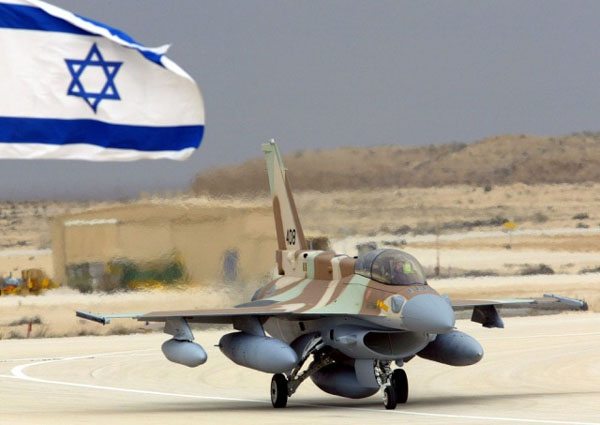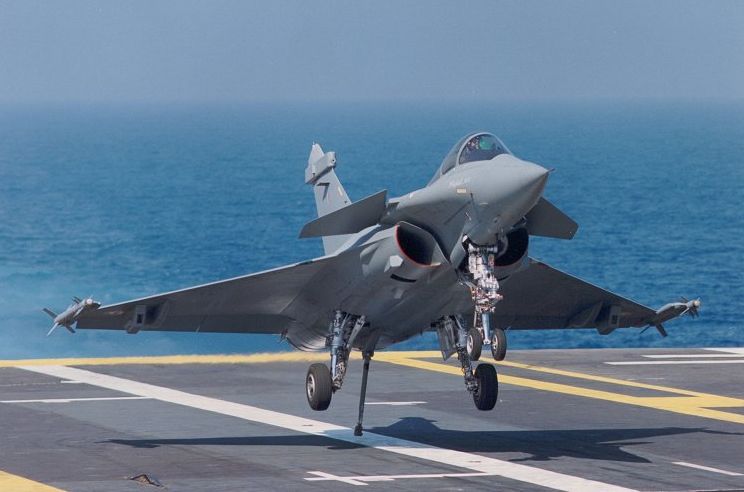Once upon a time, Israel was concerned about the possibility of a ground invasion of enemy armies into Israeli territory. The Middle East has since undergone significant change; the battlefield of today and of the future, with which the IDF must contend, is quite different. Consequently, the IDF and the IAF must also change and develop capabilities that will be able to deal with the current and future challenges.
“Today’s Middle East blends two major elements: warfare against non-state actors such as guerrilla and terrorist groups, as well as the whereabouts of advanced weaponry in the region”, explains Lieutenant Colonel Shai, head of an undisclosed department at IAF headquarters and a weapon systems operator at the “Hammers” squadron. “Superpowers like Russia and the United States have been arming Middle Eastern countries with advanced weaponry, out of different interests. With the collapse of certain regimes, the same weapons are likely to flow into the hands of terrorist organizations”.
These two elements, coupled with other factors, are actually producing a whole new and diverse battlefield, from advanced fighter jets like the MiG-29, to the threat of electronic warfare, to so-called Qassam rockets.
“The IAF has diverse and accurate armaments that can respond to a broad spectrum of targets. For example, [the IDF] has developed weaponry that can hit enemy fighters hiding within a civilian population, with minimal damage to those not involved”, adds Lieutenant Colonel Shai. At the same time, he points out that most of the IAF’s capabilities are ready to inflict significant, widespread, and deterrence¬-producing damage.
A good example of targeted striking capabilities is the opening shot of Operation Pillar of Defense at the end of 2012: the elimination of then-head of Hamas’s military wing, Ahmed Jabari, through a targeted strike. The operation required target detection, a long-term surveillance of said target, a period of waiting until the moment in which no civilians would be found near the target, and finally, an accurate, pinpoint strike on the target.
“One of the processes that have been carried out in recent years is the reduction in the time it takes for information to pass between the reconnaissance divisions and the attacking divisions. If a target such as a missile-firing squad goes out in open for a short period of time, they have to be identified and the information has to be passed on within seconds. Automatic systems that do not require human touch have been developed and shorten the process”, explains Lieutenant Colonel Shai.
Future Technology
Even the Headquarters and in the war rooms, there are technological advancements. Using different reconnaissance system, a large amount of information is gathered, from which much can be produced to the benefit of the army.
As high as the level of capabilities may be, and as much as the enemy advances, the information that needs to be analyzed, processed, and shared keeps piling up. Using advanced sorting systems, the IAF has managed to process information from all intelligence divisions for sake of creating targets at a faster pace.
“If, in the past, we were dealing with dozens of pieces of intelligence and single targets an hour, today, we deal with hundreds of pieces of intelligence and dozens of targets every hour. The enemy is more active, the level of our means of reconnaissance is higher, and the whole battle is run with a high level of intensity”, adds Lieutenant Colonel Shai. “We have decided to make systems that will quickly and qualitatively recommend possible courses of action based on predetermined policies”. These systems can receive data in advance, such as the location of a target, time of operation, the weapons that can be used, and then plan an operation in a tenth of the time needed to plan one without the help of such systems.
A Winning Combination
One of the prominent features of the modern battlefield is the growing use of unmanned aerial vehicles (UAVs). As aerial systems controlled from the ground, UAVs allow for flexibility and therefore are capable of easily being integrated into the quickly changing modern battlefield as central units or as support for the ground forces. The UAV is quickly becoming one of the main means of accomplishing goals and fulfilling needs in the face of the current challenges.
“The direction in which we have to direct the modern battle field is the right mix of manned aircrafts and unmanned aircrafts. There has to be a deep, operational relationship between the platforms, as they complement one another through their capabilities. It is possible to deal with any mission through the cooperation between UAVs and manned aircrafts”, explains Major (res.) Alon, one of the most senior officers in UAV Division in Israel, who was Deputy Commander of the “First Drones” squadron and who is an international expert in the field of strategy, development and assimilation of drones and is the chairman and founder of the UAV conference of “Israel Defense”. “The UAV Division will play a bigger role in the modern battlefield, and these days, UAV operators are already dealing with operational challenged no less daunting than the ones with which pilots deal”.
According to Major (res.) Alon, technical operational aspects of UAVs are becoming simpler, while the mission-related aspects are being more complex. There are many aspects that cannot be left to the judgment of a machine and require human judgment.
“In the Second Lebanon War, a senior UAV operator on a search mission went missing and rescuers were called thanks to the skills and professionalism acquired over the years. In another case, during Operation Cast Lead, a UAV operator identified irregular behavior in a terrorist who has impersonated an IDF soldier”, adds Alon. “An automatic system, would not have identified the impersonator”
Working Hand in Glove
On the other hand, there are missions, in which UAVs have a tight advantage. It is ideal for carrying out monotonous missions and missions that require the ability to fly for many hours continuously in the air, which in the modern battlefield might be useful for many needs. Even a multi-area system in which events are taking place in different areas, the UAV completely integrates and is flexible enough for different missions.
“The UAV is versatile and allows for changes in area, missions, and capabilities in a short period of time”, says Alon.
In wars, systems, and operations, there is a problem known as “the fog of war”. In the modern battlefield, the problem is even more pronounced because sometimes a battle can take place in urban centers and it is hard to know with certainty what the situation looks like. The UAV provides operational intelligence at the moment of truth, which leads to the dissipation of the metaphorical fog.
Even transport missions suit the UAV Division: “There is no reason UAVs won’t carry out supply and armament transport missions. They will also prevent risk to the lives of the pilots. Nonetheless, in missions, in which forces are transported, people will already be involved, and so there is no justification for using a UAV operator”, explains Alon who stresses that “there is no such thing as an air force without people in the air. A modern, advanced air force will not be able to operate exclusively with UAVs. The key is the correct combination and balance between the systems”.
The UAV Division also plays an important role in joint security mission: according to Major (res.) Alon, the drone is the best tool for identifying and tracking targets on the ground. “We have to understand and internalize the fact that drones are an inseparable part of the battlefield today”, Alon explains, “Even on the enemy’s side”.











